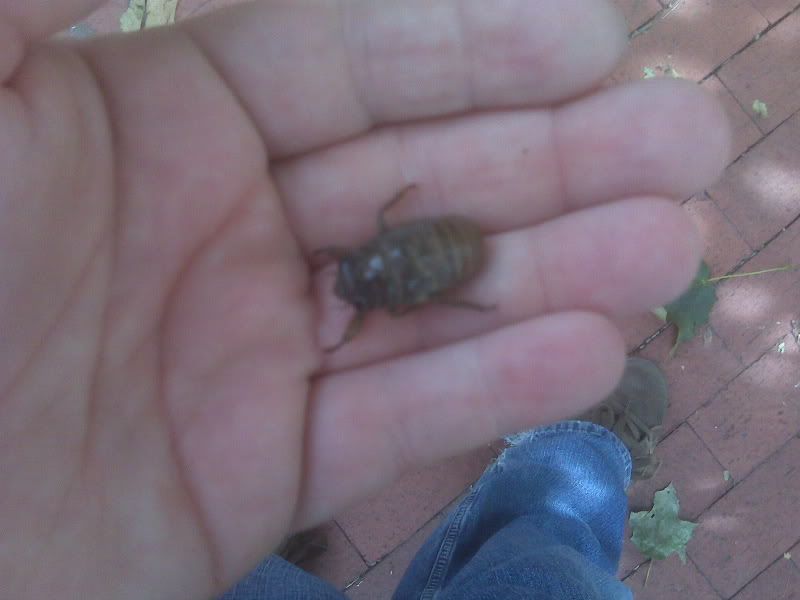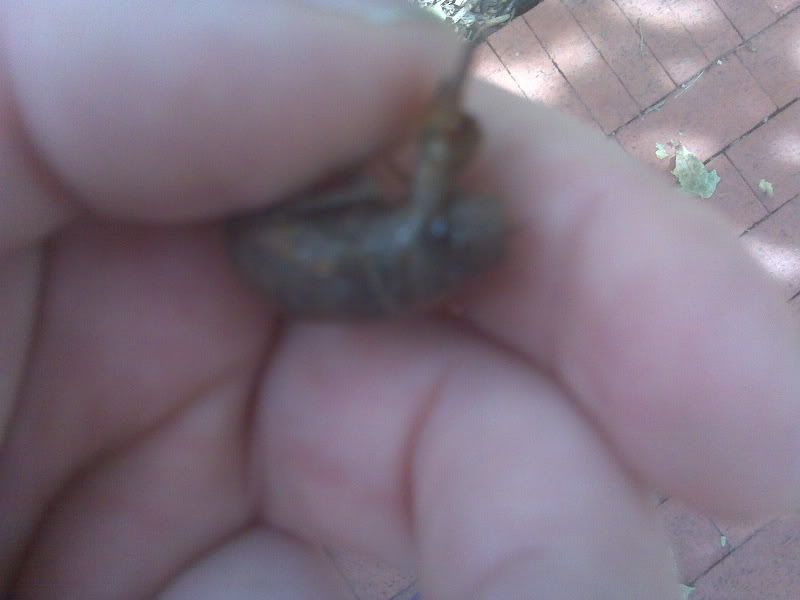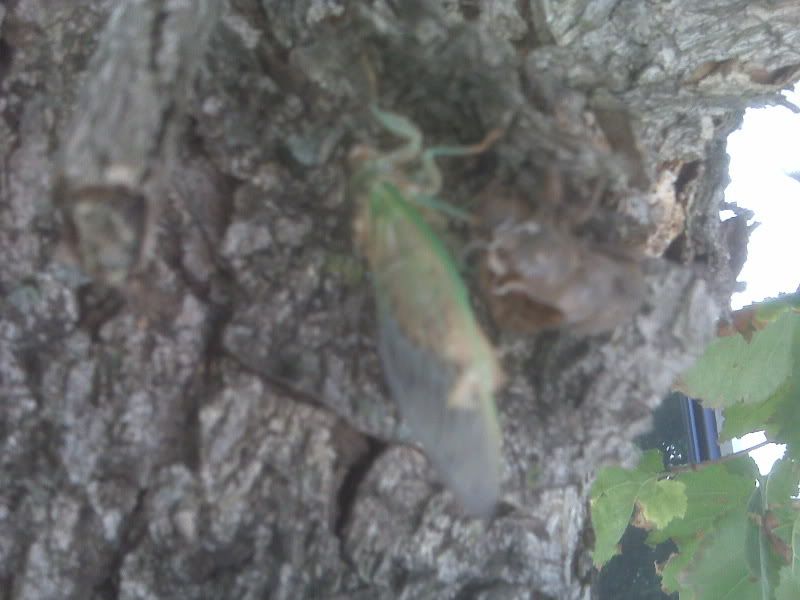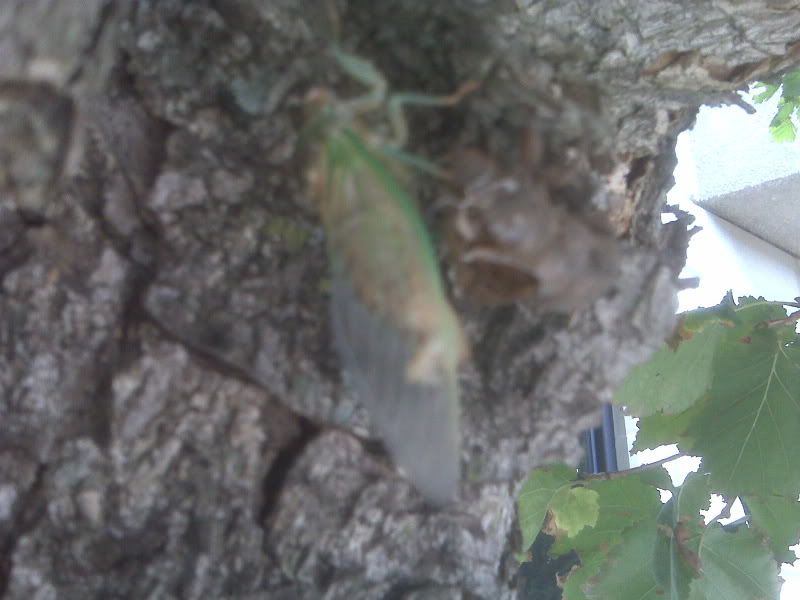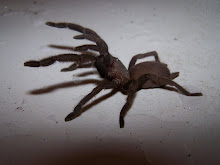Environmentally Friendly Pest Control: The Vedalia Beetle and Cryptochaetum iceryae
Biological control is exactly what it sounds like in a nutshell...that is, the practice of using organisms to control organisms. It's cheap and effective quite a bit of the time. Biological control depends on the density of the pests to be effective. The more dense the pest population, the easier time that whatever control organism used (predator, parasite, pathogen, etc.) will have finding it's victim. We have quite a few exotic pests that reach incredible population densities quickly such as the soybean aphid, the gyspy moth and the fire ant. All of these are susceptable to biological control (and I'll be working on articles detailing methods to control them with bacteria, nematodes, parasitic flies, wasps and ants at a later date ;)). However to explore biological control fully in context, we first need to go back to the beginning. The very first case where biological controls were investigated, implimented and showed results. We must also investigate a spectacular failure. We'll do both in the coming weeks.
Agriculture has always been important to the US economy. I live in Iowa and my hometown is surrounded by countless miles of cornfeilds. Currently, I really do live next to a cornfeild. Many of my classmates grew up on farms. Agriculture isn't just a cornerstone of the US economy, it's a cornerstone of the world's economy. After all, we need food to live.
Unfortunately for us, many insects love agriculture as well. And why wouldn't they-we grow big plants and pump as many nutrients into them as we possibly can. There aren't a whole lot of insects that can substist in an environment such as farms that almost completely dissapear every year and begin anew the following year. So most insects aren't actually pest species. However, there are about 600 (out of a few million or so) which become regular problems in the US.
Some of the most major pests are in the Homoptera. These insects have mouthparts which peirce the plant and suck sap out of it. Aphids are an example. It's not exactly the damage which most people associate with insects...most people think of insect damage as the skeletonization and bite marks we associate with japanese beetles or catterpillars. The damage isn't exactly dramatic or even obvious, but large numbers of these insects will remove enough nutrients to stunt growth and reduce yields.
So...back to agriculture. Back to the olden days of the 1850s. The California gold rush really helped to populate California. However, as the gold mines stopped producing people switched to agriculture. They experimented with nearly everything, including pesticides in an era when pesticide development was still in it's infancy.
Unfortunately as mentioned earlier, when you start growing large amounts of crops insects aren't far behind at all. And due to the fact of international trades, sometimes we have pests show up and we have no clue where they came from. These are the worst types of pests because many native pest levels are controlled by so-called natural enemies. Things like predators and parasitoids.
The specific pest which showed up was a bad one. Not just pain-in-the-ass bad...I'm talking large, prolific, armored and potentially apocalyptic for the then-fledgling citrus industry in California. The pest was called Icerya purchasi. It's a kind of scale insect...kind of like an aphid, but not.
Like an aphid, scale insects have the sucking mouthparts and damage plants in a similar manner. Unlike aphids, they're hermaphrodites...but they self-fertilize so males aren't really neccessary. The adults have a thick, waxy covering which can make control with pesticides difficult. Their young are mobile and the adults are sedentary. The young, known as crawlers, look for a nice place to hunker down and suck sap. The adults keep producing crawlers who can then spread by wind or by crawling from tree to tree.
The scale insects were devastating and threatened to wipe out the California citrus industry in it's entirety because they were so difficult to control. By this time, many entomologists were well aware of the fact that many of our pests were exotic. As far back as the late 1850s, Asa Fitch and Benjamin Walsh suggested using natural enemies to control exotic pests, however they weren't exactly vocal about the practice.
Charles Valentine Riley, a student of Walsh's was the Chief of the Division of Entomology at the USDA. He wasn't exactly a popular figure because of his aggressiveness and ambition. He traveled quite a bit, taking frequent trips to Europe which resulted in congress passing appropriations legislation to prohibit him from traveling.
So you need to find a solution to the exotic pest threatening the extinction of an entire industry, but you can't travel because you can't get the $2,000 to fund your expedition. What do you do?
Well, first you need some ecology 101. You need to know where to look and what to look for. Everything has parasites. Usually multiple parasites. Everything. Grasshoppers are parasitized by nematodes and tachnid flies. Aphids are commonly parasitized by parasitic hymenopterans. However, most parasites/parasitoids are pretty specific; they have evolved to feed on either one species or a narrow range of species. There are also predators that eat a narrow range of insects. Ladybird beetles (Coleoptera: Coccinellidae) are an example. But if you want to find these guys, you need to look for them in their native habitat because that's where these types of relationships will evolve. Many of our exotic pests here in America are not native to our country. They evolved elsewhere, got imported and then began to spread. C.V. Riley was almost certian I. purchasi came from either Australia or New Zealand because it was described in 1878 feeding on Acacia (yay taxonomy-I'm currently eyeing taxonomy as my feild of study...either that or insect evolution).
So...you've hit the books and you know that the populations of this pest are kept in check by natural enemies. You need to get around this whole travel thing. How do you do it?
Well, you ask help from the people you're trying to help. In that day and age, the citrus growers were wealthy, powerful and understandably desperate. Riley knew that he would need about $2,000 for his venture-and back in the day, this wasn't a small sum of money. But thankfully when rich people are desperate, they'll do almost anything to keep their lifestyles intact.
The fruit growers adopted a resolution in favor of sending someone of Riley's choosing to Australia to look for predators and parasitoids. They put pressure on their representatives, who used an international exposition in Melbourne as a way around the troublesome appropriations legislation.
Riley sent Alfred Koeble to look for I. purchasi in it's natural habitat and he eventually found two promising natural enemies-a tachnid fly called Cryptochaetum iceryae as well as a coccenelid which we now know as Rodolia cardinalis that fed exclusively on I. purchasi.
Back in those days, overnight USPS shipping didn't exist. I can tell you from experience (I raise tarantulas) that you should expect casualties when shipping things over long distances even when you're only using overnight to three day shipping. Most invertebrate dealers won't guarantee three day shipping. In this instance we're not talking about a three day journey on an airplane, we're talking about a cross-ocean voyage on a ship. Koeble constructed mini-insectaries on the deck of the ship and housed citrus trees infested with I. purchasi with the vedalia beetles to get them across.
Koeble sent about 12,000 of the tachnids and only 129 R. cardinalis. The tachnid flies proved to be less effective in controlling the beetles everywhere except in cooler climates. R. cardinalis, however turned out to be a voracious and effective predator. Those 129 specimens turned into about ten thousand, and then exploded to millions within a few years. Imports of citrus out of California nearly tripled, from 700 carloads per year at the peak of the infestation to 2,000 carloads per year. Not too bad for $1500.
To this day, the beetles and flies still do a pretty good job of keeping I. purchasi in check despite the fact they're competitors. The flies don't parasitize the beetles and the beetles don't eat scales infested with flies. The immature stages of C. iceryae are resistant to cold weather, which means they become active sooner. This also means that they can control I. purchasi in places like coastal California, where the vedalia beetle doesn't go through as many generations in a year due to the cooler temperatures. In the hot desert areas, the vedalia beetle is the dominant predator and in interior areas like Riverside, the vedalia beetle and C. iceryae switch off between spring and summer with the fly being the dominant natural enemy during the cooler parts of the year and the vedalia beetle being dominant during the warmer seasons.
L E Caltagirone, R L Doutt (1989). The History of the Vedalia Beetle Importation to California and its Impact on the Development of Biological Control Annual Review of Entomology, 34 (1), 1-16 DOI: 10.1146/annurev.en.34.010189.000245
Labels: Education, Entomology, Peer-reviewed research

